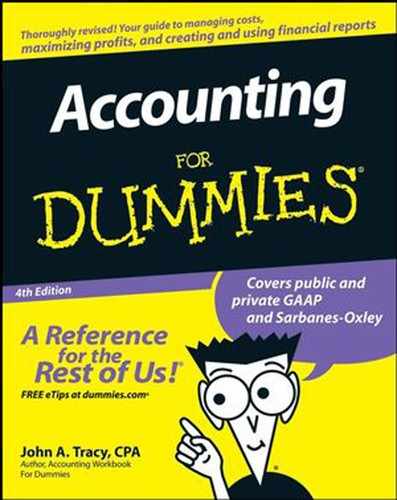17.7. Compare Cash Flow and Profit
The objective of a business is not simply to make profit, but to generate cash flow from making profit as quickly as possible. Cash flow from making profit is the most important stream of cash inflow to a business. A business could sell off some assets to generate cash, and it can borrow money or get shareowners to put more money in the business. But cash flow from making profit is the spigot that should always be turned on. A business needs this cash flow to make cash distributions from profit to shareowners, to maintain liquidity, and to supplement other sources of capital to grow the business.
NOTE
The income statement does not — I repeat does not — report the cash inflows of sales and the cash outflows of expenses. Therefore, the bottom line of the income statement is not a cash flow number. The net cash flow from the profit-making activities of the business (its sales and expenses) is reported in the statement of cash flows. When you look there, you will undoubtedly discover that the cash flow from operating activities (the official term for cash flow from profit-making activities) is higher or lower than the bottom-line profit number in the income statement. I explain the reasons for the difference in Chapter 6.
Businesses seldom offer any explanation of the difference between profit and cash flow. What you see in the statement of cash flows is all you get — no more. You're pretty much on your own to interpret the difference. There are no general benchmarks or ratios for testing cash flow against profit. I couldn't possibly suggest that cash flow should normally be 120 percent of bottom-line profit, or some other ratio. There is one rough rule: Growth penalizes cash flow — or, more accurately, growth sucks up cash from sales because the business has to expand its assets to support the higher level of sales.
